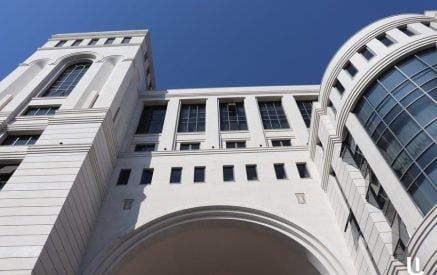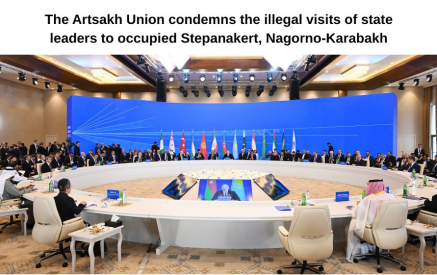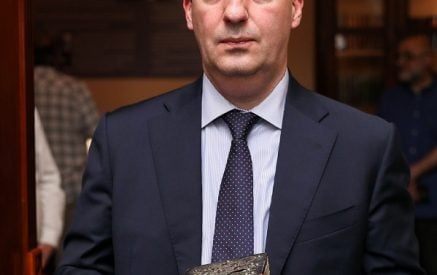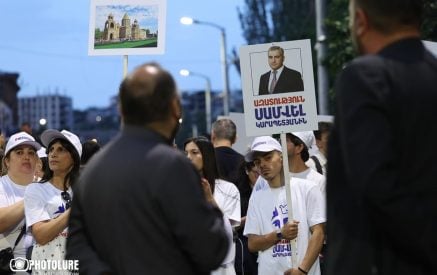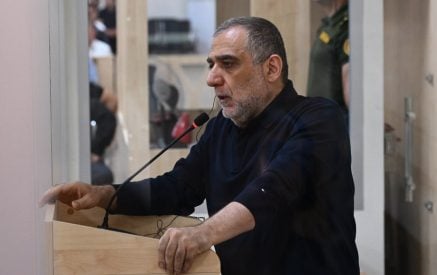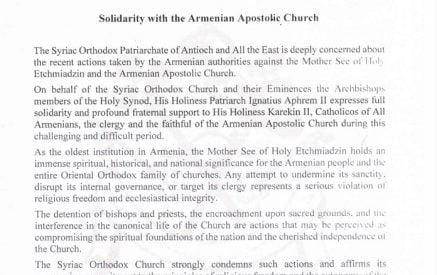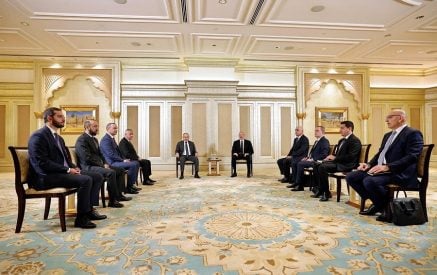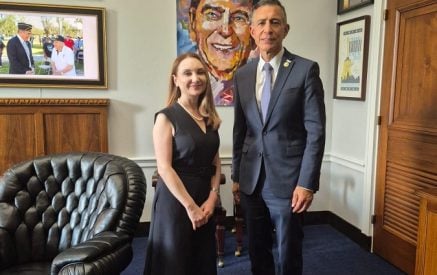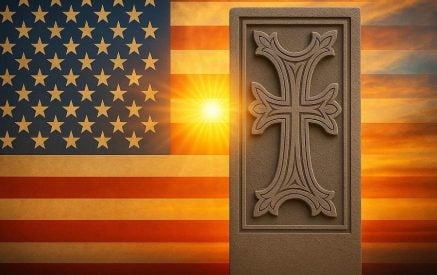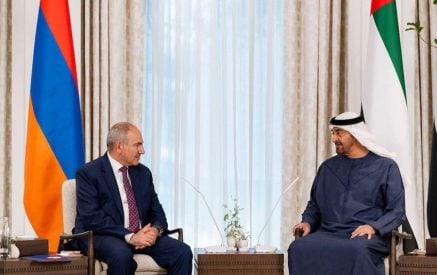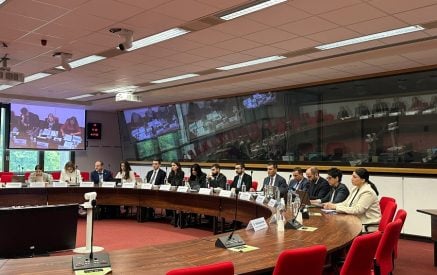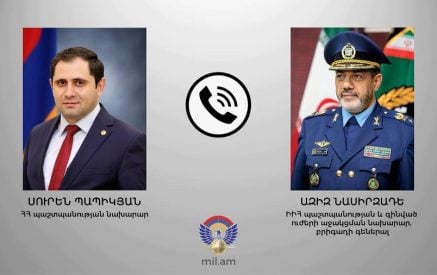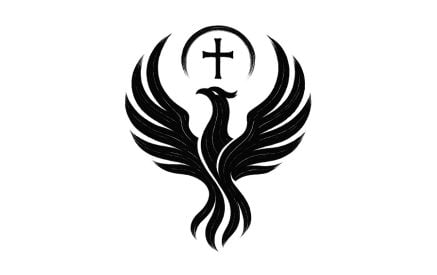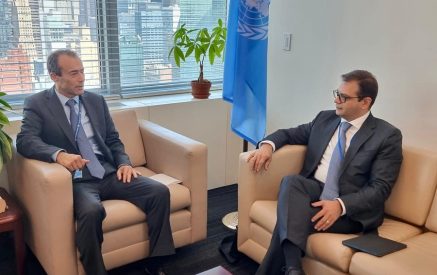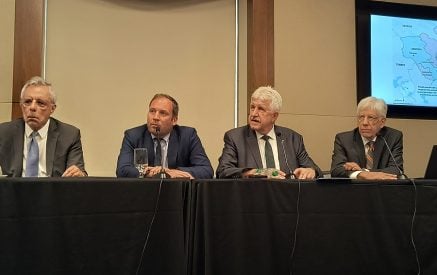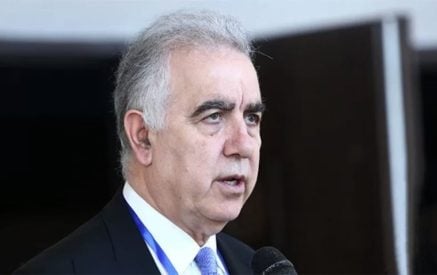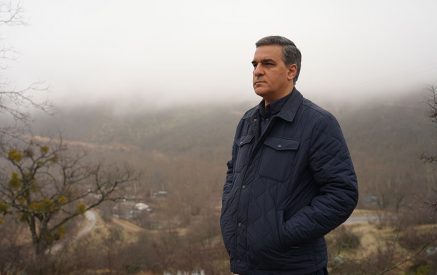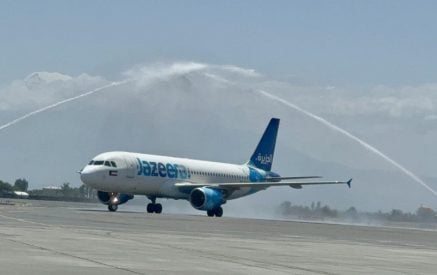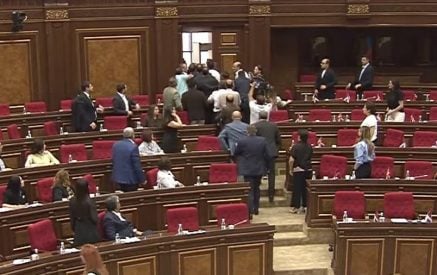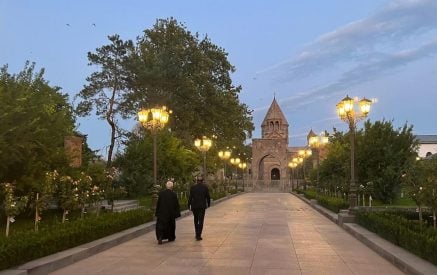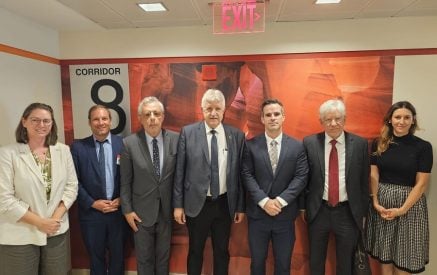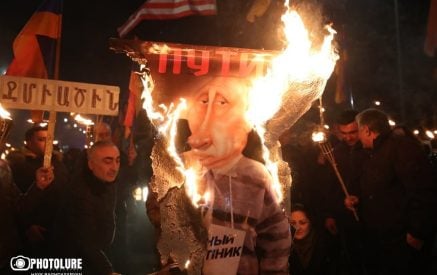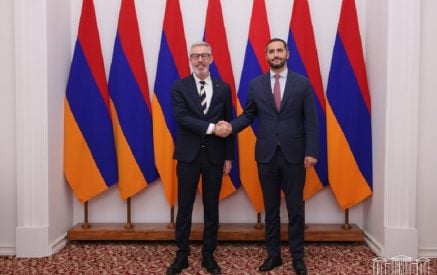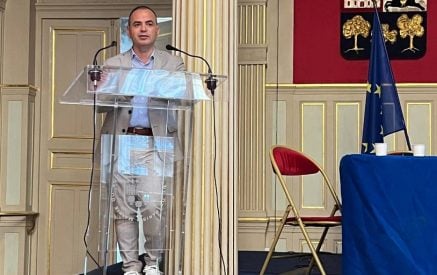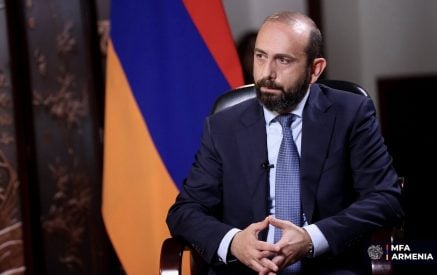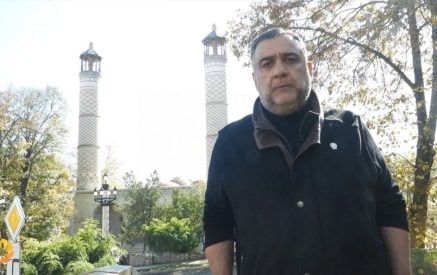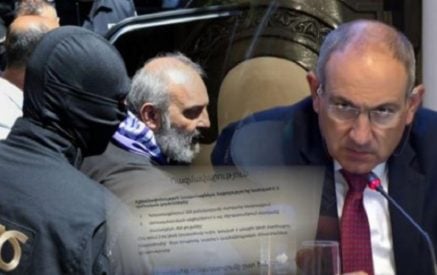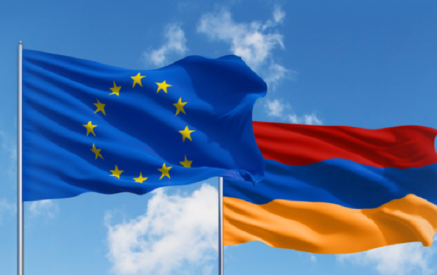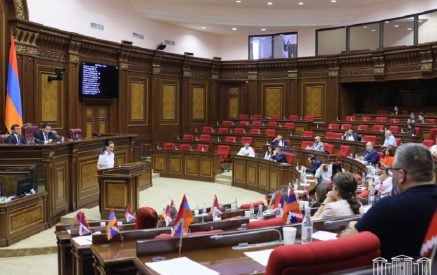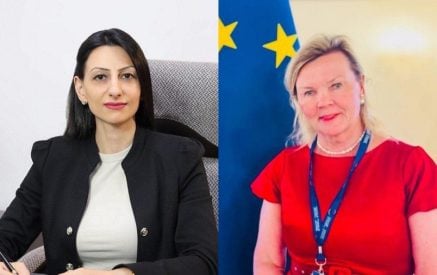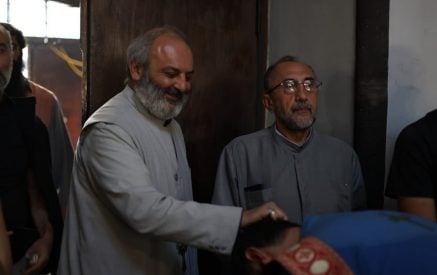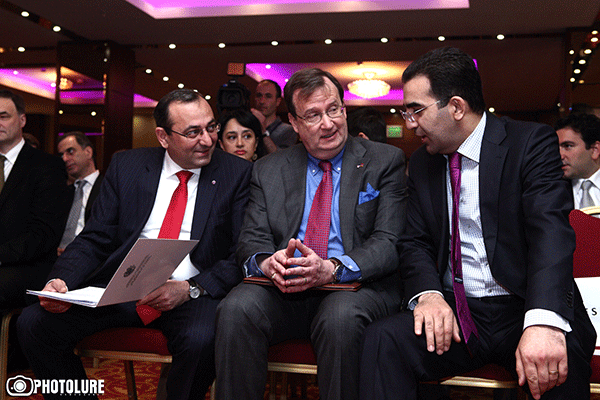An exclusive interview of “Aravot” with U.S. Ambassador to Armenia Richard M. Mills
– Mr. Ambassador, the U.S. is a large trade partner for Armenia. In May 2015 in Washington the TIFA was signed between the U.S. and Armenia, whereby the U.S. and Armenia committed to working towards an environment conducive of investments and increased trade and goods turnover between the two countries. Are the steps taken by the Armenian Government to this end satisfactory for the U.S.?
– We are seeing progress in working through some of the existing barriers to trade that we’ve identified through the TIFA process and at the first TIFA meeting, held last fall in Yerevan. There’s ongoing, robust dialogue to work through those impediments. I am committed to continue working with our Armenian government partners to expand trade between the United States and Armenia.
I am pleased that Bridget Brink, the State Department’s Deputy Assistant Secretary for the Bureau of European and Eurasian Affairs, visited Armenia at the end of June, during which she met with Armenian government leaders and heard from the Armenian and U.S. business communities ways of expanding U.S.-Armenia trade.
Read also
Following last November’s Trade and Investment Framework Agreement (TIFA) Council meeting, our two countries formed eight working groups, bringing relevant experts together to resolve barriers to increased trade in the following areas: Business Development and Promotion; Technical Barriers to Trade; Sanitary and Phytosanitary Measures; Intellectual Property Rights; Government Procurement; Environment; Labor; and Customs. Under the TIFA framework, the Embassy hosted Aimee Larsen, the Generalized System of Preferences (GSP) Director of the Office of the United States Trade Representative on March 23, in cooperation with the Ministry of Economy, for a seminar on expanding Armenia’s exports to the U.S. through the GSP Program. Also as part of our business promotion efforts under TIFA, the Embassy organized a one-day business conference on May 18 focused on trade and investment opportunities in Armenia for representatives of nine major U.S. firms. As the U.S. market opens to more Armenian goods, the Armenian economy can grow. And when more U.S. companies are able to compete on an equal playing field in Armenia, the people of Armenia get more options. In turn, increased choice and competition will help fight corruption and monopolies and reduce costs for the Armenian consumer.
– Since 1991 the U.S. assistance provided to Armenia through the USAID has amounted to 2.18 billion. In addition, starting from 1998 humanitarian assistance was provided to those affected by the conflict of the NK. What assessment you can offer looking at the results? What are the accomplishments made by Armenia, what are the areas that have seen positive developments; what are the issues that still hamper Armenia’s development and need to be addressed?
– As you know, I have followed Armenia since the time of its independence – I was the first desk officer for independent Armenia at the U.S. Department of State in the early 1990s. Now, 25 years later, I see the progress made in so many areas. The Armenian people have a lot of which to be proud. Their nation is growing, strengthening, and improving. And USAID has been here since 1992, working with the Armenian people to help achieve some of this progress. We have supported a broad range of development programs in Armenia. Working in collaboration with Armenian partners, USAID has an impressive record of achievement in areas such as humanitarian relief, legal reform, small business promotion, and energy and water regulation.
Here are just a few examples of our recent USAID successes:
In January 2015, with the support of USAID’s Pension Reform Implementation Plan, the Ministry of labor and Social Affairs was able to amend the law on “Funded Pensions” addressing pension rights of women. For the first time, the law stated that during the two-year period of child care leave, women should receive a state co-financing at the amount of 5000 Armenian drams (approximately 12 U.S. dollars) per month as well as a funded contribution from their employer of 3000 Armenian drams (approximately 8 U.S. dollars) per month.
The Smithsonian Institution-USAID “My Armenia” program is working to expand tourism in Armenia, particularly in the regions, by building “experience” opportunities based around Armenia’s incredible tourist attractions, from Tatev and Dilijan to Vanadzor and Areni.
“Save the Children” and the mayor of Abvoyan City signed an agreement establishing a new Social Enterprise in Kotayk Marz through USAID’s LIFE program that will ensure employment and livelihood improvement opportunities for Persons with Disabilities.
The USAID-supported academic partnership between Yerevan State University (YSU) and Arizona State University (ASU) has advanced gender studies in Armenia and is empowering women to succeed in their careers.
With the Support of USAID, Armenia’s Parliament for the first time recently established formal government spending priorities and benchmarks to measure progress. The National Assembly is now poised to provide citizens with the information needed to participate in setting spending priorities and holding the government accountable for achieving results. This critical reform also provides the Assembly with a meaningful voice in the budget process and the tools to monitor government performance.
June 2015 marked the completion of the first year of USAID’s “Improving Infant and Young Child Health and Nutrition” Project, which led to the reduction of the under-five mortality rate and a decline in the prevalence of underweight children through improved monitoring and increased accessibility of quality childcare services.
USAID provided support for the development, promotion and adoption of the new aviation policy framework based on ‘Open Skies’ principles, which led to the creation of the Civil Aviation Policy Department (CAPD) within the Ministry of Economy. USAID’s support also included capacity building activities for the CAPD staff.
USAID provided assistance to the development of the Southern River Basin Management Plan, which will guide policy makers, resource managers, community organizations, the private sector, and other stakeholders in the protection, rational allocation, and restoration of Armenia’s water resources in the Southern Basin – including the Vorotan, Vogchi, and Megriget Rivers.
USAID helped implement 24 pilot projects to support new sources of renewable energy. As a result of these projects, Armenia now saves 1,449,612 kWh of electricity and 1,193,459 m3 of water annually.
USAID also supports de-mining efforts in Nagorno-Karabakh.
Currently, USAID is partnering with Armenia to increase the country’s economic competitiveness, promote civic participation, expand access to quality healthcare and social services, and protect its most vulnerable citizens from poverty. Our overarching goal in Armenia is to help Armenia succeed as a more engaged, prosperous, and well-governed society. Working with partners in the private sector, civil society, and local institutions, we want to help Armenia find Armenian solutions to the problems it confronts. In so doing, we have reoriented our focus away from humanitarian assistance towards programs that boost economic, political, and social development – a shift from aid to trade.
As to what hampers Armenia’s development, I believe that the scourge of corruption holds Armenia back in a number of areas. That is why, together with its Armenian partners, the entire U.S. Embassy is helping increase access to markets and resources by fighting corruption and leveling the playing field for innovation, investments, and businesses. Last fall I outlined my four priorities during my time in Armenia, and helping Armenia fight corruption is one of those priorities. USAID plays a part, helping fund various experts and improvements, such as the pension system reforms that helped weed out those who were receiving pensions wrongly. Additionally, we work to provide educational opportunities for government and civil society leaders fighting corruption through programs like our International Visitor Leadership Program. We bring experts to Armenia to provide training, most recently Peter Ainsworth, the Senior Anticorruption Counsel of the U.S. Department of Justice. We are committed to working with those in Armenia who want to find Armenian solutions to the problem of corruption.
– Russian-Turkish Relation tensions seems to be mitigated. We clearly know that Ankara supports Azerbaijan in the Karabakh issue. It is interesting if you think that it is possible that today’s Turkey. Do you think that today’s Turkey will take steps in normalizing Armenia-Turkey Relations? What solutions does the US government see in this direction and what steps has the US already taken?
– The U.S. is uniquely suited to serve as a conduit, a bridge between Armenia and Turkey. We continue our efforts to find and provide space for Armenians and Turks to meet and discuss frankly their history and to find common ground through shared interests be these interests economic, cultural or political. While difficult, the situation is not intractable. There are real opportunities for both sides to work together on issues that can benefit both countries and lead to engagement between the two societies; as we have seen in the recent growth in trade and commercial ties.
EMMA GABRIELYAN




